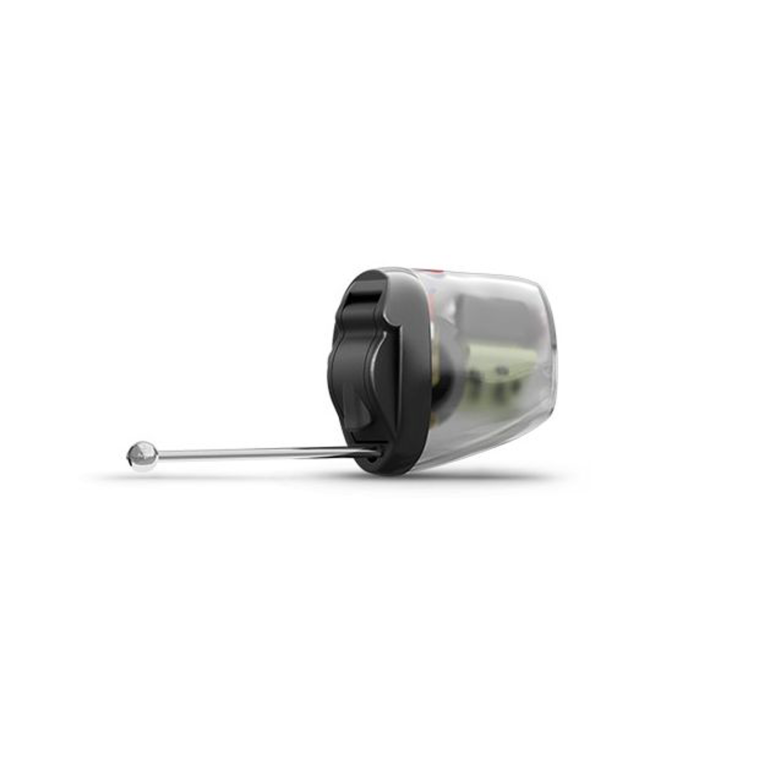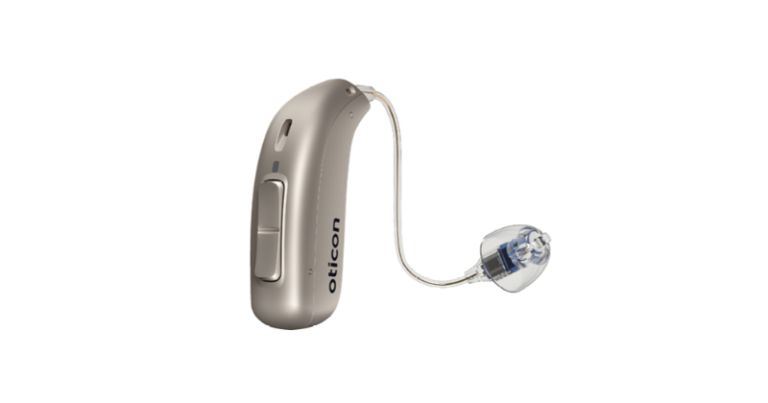
Completely In Canal hearing aids
CIC hearing aids are small, custom-moulded devices that sit inside your ear, ideal for those with mild to moderate hearing loss.
Behind The Ear hearing aids, or BTE hearing aids, are designed so that the main body of the aid can sit comfortably behind the ear. The body is then connected via narrow tubing to a small ear mould that sits in the outer ear canal.
Gone are the days of chunky beige plastic casings – modern BTE hearing aids are sleek, stylish and available in a range of colours to blend with hair, skin tones or even your glasses.
If you’re wondering whether Behind The Ear hearing aids are a good option for you, why not take a look at Which Hearing Aids Are Right For You?
BTE hearing aids hold microphones and receivers in the shell that sits behind your ear. These detect and process sounds around you, then send them through the small tube that sits over the top of your ear to the ear mould within your ear.
The cost of BTE aids can vary hugely according to the level of technology that is inside, with prices for a pair of aids ranging from less than £2,000 to over £5,000 as part of our complete Hearing Care Packages. However, Behind The Ear aids are generally one of the more affordable hearing aid styles due to their larger size.
Why not book an appointment with your local audiologist for more information on the costs of the specific technology you are interested in?
| Behind The Ear (BTE) | In The Ear (ITE) | |
| Pros | + Versatile, powerful amplification + High-end technology + Bluetooth connectivity + Rechargeable options + Long battery life + Easy to maintain and adjust |
+ Less noticeable when worn + Easy to position correctly + Easy to maintain and adjust + Versatile amplification |
| Cons | – Conspicuous when worn – Can be difficult to position correctly – Can suffer from feedback and wind noise |
– Custom moulding can be expensive – Lacks connectivity options due to small size – Smaller batteries restricts battery life |

If you think Behind The Ear hearing aids might be a good choice for you, why not book a free hearing aid review at your local hearing centre? Alternatively, if you’re new to the world of hearing health, you can book a free hearing test?
Our expert audiologist will discuss your lifestyle needs and personal preferences, carry out a free assessment to check your current hearing levels and help you find your most suitable hearing aids. To book, call us on 0800 52 00 546 or click below to book online.
Absolutely. Many people with BTE hearing aids can wear their glasses comfortably and, in most cases, adjustments can be made so that the two sit harmoniously together.
BTE hearing aids have an ergonomic design so they sit comfortably behind your ear, following the ear’s natural contours and secured by the ear mould.
The main body of a BTE hearing aid should be tucked behind the ear, with the ear hook placed comfortably over the top of the ear.
Day to day, you should wipe the exterior of your aids using a soft, dry cloth and use the dedicated cleaning tool to remove debris from microphone and speaker ports. The tubing can be cleaned with warm soapy water, and should be regularly checked for blockages or damage, as should the ear mould. You will also need to change the wax filters regularly, which are guards preventing ear wax from entering your aids.

CIC hearing aids are small, custom-moulded devices that sit inside your ear, ideal for those with mild to moderate hearing loss.

IIC hearing aids are the smallest devices available, packing incredible technology into a tiny shell that is virtually invisible when worn.

ITC hearing aids are custom-moulded to sit inside your ear canal, and are therefore smaller than ITE aids, but not as fiddly as CIC or IIC devices.

ITE hearing aids provide more powerful amplification than in-canal aids, while still using a relatively discreet custom-moulded shell.

Suitable for a broad range of losses, RIC hearing aids are a popular style that is easy to use and full of the latest technology.

Hearing Aids - Jul 2024

Hearing Aids - Jul 2024

Hearing Aids - Feb 2021

Hearing Aids - Nov 2025